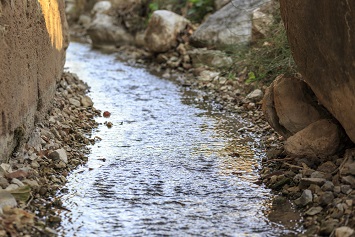In response to the U.S. Supreme Court’s (SCOTUS) decision in County of Maui v. Hawaii Wildlife Fund, the EPA issued draft guidance dated December 4, 2020, to clarify how the Agency intends to apply the decision on a case-by-case basis.

Alonso Aguilar / Shutterstock.com
“The Maui decision outlines seven non-exclusive factors for the regulated community and permitting authorities to consider when evaluating whether a discharge of a pollutant from a point source that travels through groundwater to a water of the United States is the ‘functional equivalent’ of a direct discharge from a point source to a water of the United States,” according to the EPA. “This draft guidance places the functional equivalent analysis into context within the existing NDPES permitting framework and identifies an additional factor for the regulated community and permitting authorities to consider when evaluating whether and how to perform a ‘functional equivalent’ analysis.”
Those seven factors are:
- Transit time
- Distance traveled
- The nature of the material through which the pollutant travels
- The extent to which the pollutant is diluted or chemically changed as it travels
- The amount of pollutant entering the navigable waters relative to the amount of the pollutant that leaves the point source
- The manner by or area in which the pollutant enters the navigable waters
- The degree to which the pollution (at that point) has maintained its specific identity
“The Court observed that the ‘functional equivalent’ test might be refined through future cases or through agency action, such as guidance,” according attorneys from Michael Best & Friedrich, LLP, in an article published on Lexology.
In its guidance document, the EPA states “the Maui decision did not change the overall statutory or regulatory structure of the NPDES permit program, and EPA cannot modify the NPDES program through guidance.” Instead, the EPA says the Maui case “identified an additional analysis that should be conducted in certain factual scenarios to determine whether an NPDES permit is required.”
EPA anticipates that the issuance of National Pollutant Discharge Elimination System (NPDES) permits for discharges through groundwater will continue to be relatively rare following the application of the SCOTUS “functional equivalent” analysis.
In considering how to implement Maui while incorporating existing Clean Water Act (CWA) regulations, the draft guidance identifies three threshold conditions that must be met before an entity is required to obtain an NPDES permit:
1. An actual discharge of pollutants to a water of the United States.
“A potential discharge—or the mere presence of a point source in close proximity to a water of the United States—is not enough,” according to Lexology. “The Supreme Court’s decision in Maui did not instruct NPDES permitting authorities to assume that discharges to groundwater that occur in the vicinity of a jurisdictional water are the ‘functional equivalent’ of direct discharges to that water. Indeed, such discharges may never reach jurisdictional waters for a number of reasons, including characteristics of the pollutant itself and the nature of the subsurface aquifer and hydrogeology,” according to the EPA. There is no need for facility operators or owners to prove the absence of a discharge.
“When there may be a discharge of pollutants through groundwater to waters of the United States, EPA recommends ‘considering whether a technical analysis would be prudent,’ to consider whether an actual discharge of a pollutant is occurring and whether such a discharge is the ‘functional equivalent’ of a direct discharge,” according to Lexology.
2. The discharge of pollutants that reaches, or will reach, a water of the United States must be from a point source.
The CWA “still requires a discharge of a pollutant from a point source to a water of the United States. If the pollutant travels through groundwater first, the same point source requirement applies.... Thus, a determination that there is or will be a point source discharge is a threshold condition that must be met before regulatory jurisdiction can be established ...,” according to the EPA’s draft guidance.
3. Only a subset of discharges of pollutants to groundwater that ultimately reaches a water of the United States is the “functional equivalent” of a direct discharge.
Demonstrating pollutants reach or will reach a water of the United States through groundwater is not enough to trigger an NPDES remit requirement. Maui requires permitting agencies to consider “‘many potentially relevant factors’ to determine whether the discharge is the ‘functional equivalent’ of a direct discharge,” according to Lexology. “In addition to the seven factors identified by the Supreme Court, the EPA also identified an additional factor that should be considered—the ‘design and performance of the system or facility from which the pollutant is released.’ EPA observes that facility design and performance is ultimately relevant to all of seven of the factors explicitly set out in Maui.”
“Consistent with the Clean Water Act’s federalism underpinnings, states are primarily responsible for protecting groundwater quality,” according to the Lexology article. “As such, it is important to note that many states already require permits or other approvals for discharges of pollutants to groundwater.”
As with all pending EPA guidance, it could be replaced by the incoming Biden administration.
The draft guidance has been published in the Federal Register and is open for public comments until January 8, 2020.